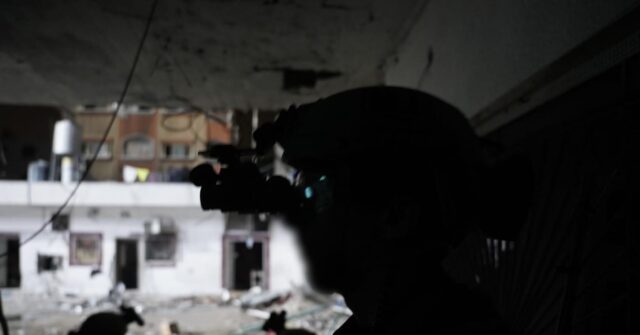The Israel Defense Forces (IDF) recently achieved a significant military objective by surrounding and engaging with Hamas operatives in northern Gaza, specifically in the area of Jabaliya. This operation was notable for its strategic approach, as the IDF opted for encirclement instead of the targeted strikes typically employed, showcasing a new tactic aimed at hindering the movement of the Iran-backed terrorists. According to reports, this unprecedented method caught Hamas off guard and allowed for the concentration of military resources in one area, effectively isolating the threat, evacuating civilians, and subsequently neutralizing enemy combatants operating from a hospital—an act that breaches international law.
As the IDF executed this plan, three distinct brigades—460th, Givati, and 401st—surrounded Jabaliya, which houses numerous civilians amid the ongoing conflict. The efforts to evacuate these individuals proved successful; the 460th Brigade alone helped to evacuate 5,000 residents initially, followed by an additional 20,000 in subsequent days. Reports indicate that the psychological barrier that previously deterred many residents from evacuating had been broken, demonstrating a shift in the local populace’s willingness to leave an area viewed as increasingly dangerous due to the nearby terrorist threats.
The culmination of the IDF’s military efforts resulted in the surrender of approximately 600 Hamas operatives, while others were neutralized in combat. Notably, many of these terrorists used the Kamal Adwan Hospital as a base, a strategic move that reflects Hamas’s tendency to operate from civilian infrastructures, thereby complicating military engagements and risking civilian lives. This tactic not only serves as a shield for the fighters but also raises serious ethical questions regarding the conduct of warfare in densely populated areas.
The IDF provided clarity on its military operations through official statements, emphasizing the importance of intelligence in identifying the presence of militants within the hospital. They allowed civilians to exit before conducting thorough searches, showcasing an intent to minimize civilian harm. Furthermore, the Gaza Coordination and Liaison Administration facilitated the hospital’s operational integrity during the military action by ensuring a continuous supply of electricity and oxygen, underscoring an effort to differentiate military necessity from humanitarian considerations amidst the chaos of war.
In confronting the threat posed by Hamas, the IDF uncovered substantial evidence of military operations embedded in the hospital, including the apprehension of around 100 terrorists and the seizure of arms, financial resources, and intelligence documentation. This discovery further substantiates claims that Hamas has persistently exploited hospitals for military advantage throughout the war, jeopardizing both healthcare professionals and patients. Their actions exhibit a calculated strategy that seeks to use humanitarian law to their benefit, complicating the IDF’s operations while highlighting a blatant disregard for civilian safety.
The ongoing conflict poses a daunting challenge, not only for military operations but also for maintaining a moral high ground in warfare. The IDF asserts that it is committed to acting within the parameters of international law while targeting Hamas. However, situations like the one in Jabaliya, where military objectives and civilian safety intersect, compel the military to navigate a precarious landscape, balancing the urgent need to combat terrorism against the imperative to protect innocent lives. This complex dynamic continues to define the broader Israeli-Palestinian conflict, as both sides contend with the ramifications of war, humanitarian crises, and the overarching quest for security.

